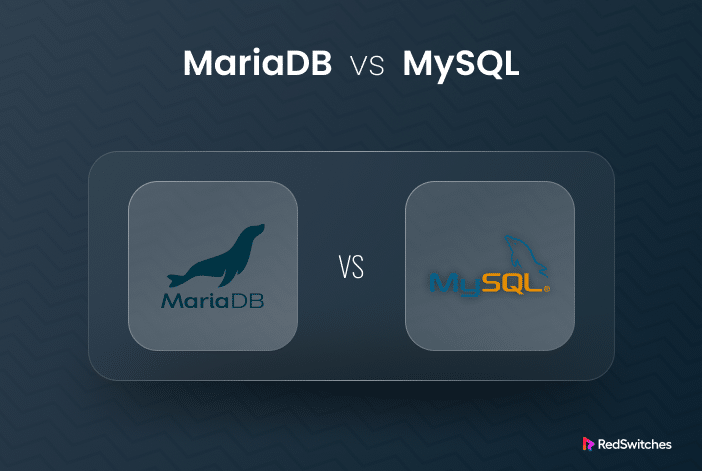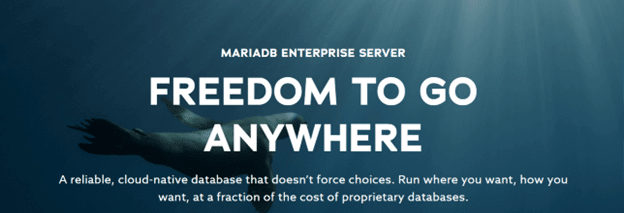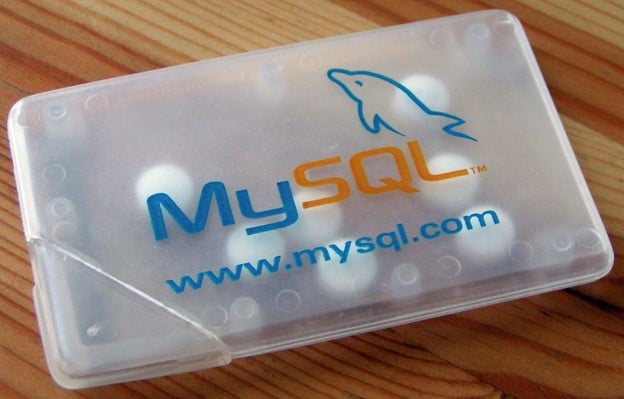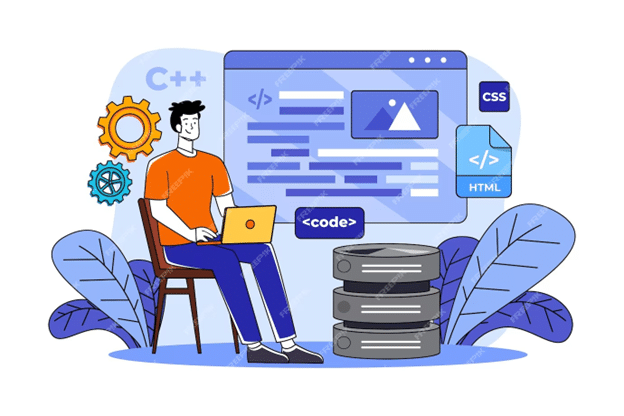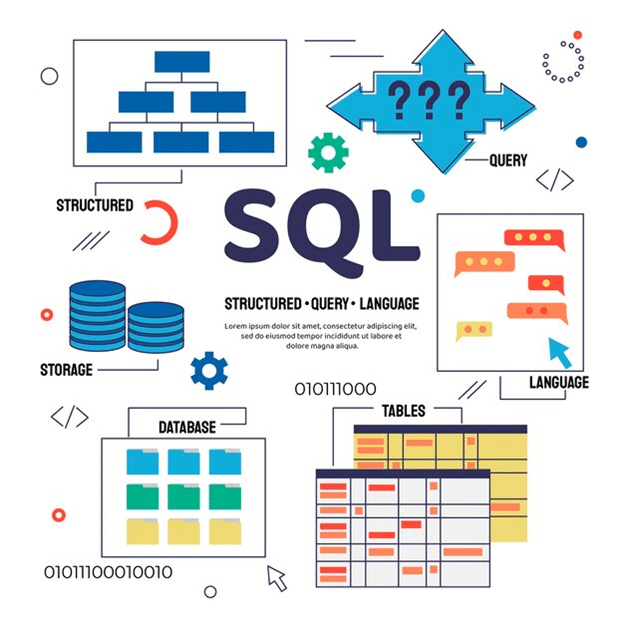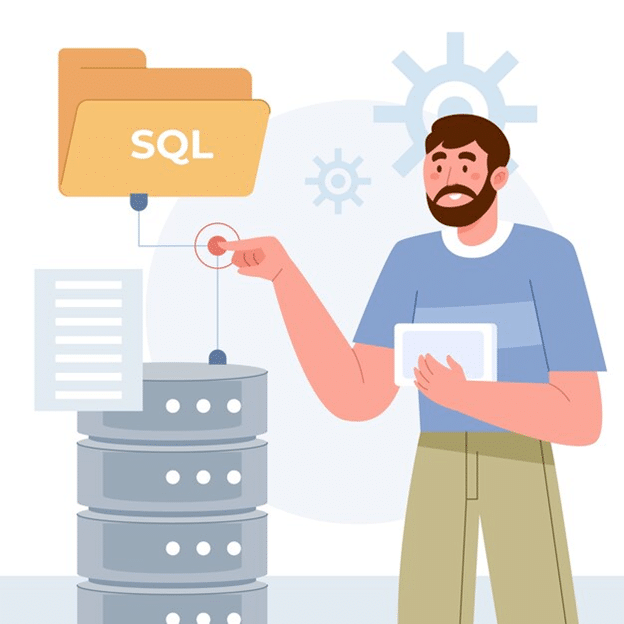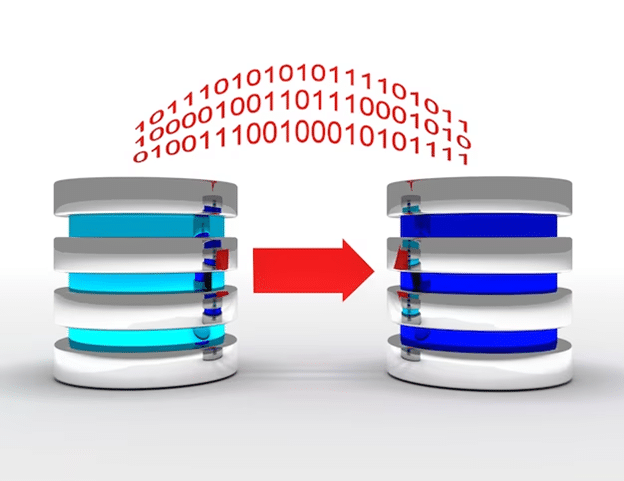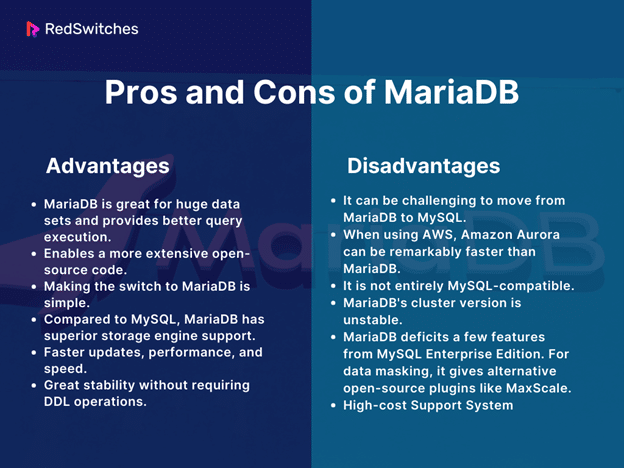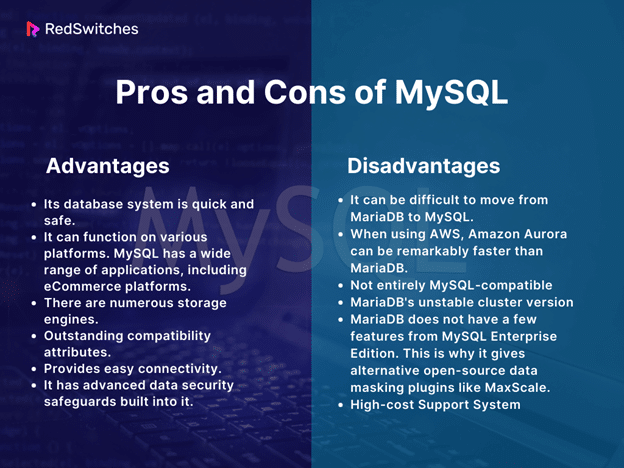Choosing the best option in the constantly changing world of database management systems is crucial for organizations and developers. The two tough competitors that stand out are MySQL and MariaDB, each of which has its own set of advantages and distinctive characteristics.
In this blog post, we examine how MySQL and MariaDB differ from one another and how they are alike and different in terms of performance. By highlighting their essential features, we hope to equip readers with the information they need to make an informed choice and choose the best database solution for their unique needs. Join us as we explore the debate between MariaDB vs MySQL in depth.
Table of Contents
- What Is MariaDB
- What Is MySQL?
- History of MariaDB
- History of MySQL
- The Differences Between MySQL and MariaDB
- MariaDB vs MySQL: A Comprehensive Comparison
- Pros and Cons of MariaDB
- Pros and Cons of MySQL
- Who Uses MariaDB and MySQL?
- Mariadb vs Mysql: Which One Should You Choose?
- Conclusion
- FAQs
What Is MariaDB
Credits: MariaDB
An open-source fork of MySQL called MariaDB was created in 2009. A more advanced iteration of MySQL is called MariaDB. It has a wide range of built-in functionality and many security and performance enhancements that MySQL lacks. While supporting the same functionalities as MySQL does, MariaDB also provides certain extras.
Switching to MariaDB from MySQL has become seamless for most apps and CMS, especially WordPress Actual data may be exported and imported without any modifications using the current software, which includes well-known CMS tools and applications like phpMyAdmin.
What Is MySQL?
Credits: Flickr
Structured query language or SQL is the foundation of the relational database management system (RDBMS) MySQL, which Oracle created.
MySQL is a key component of many of the most widely used software stacks for creating and sustaining anything from robust, data-driven B2B services to customer-facing web apps.
Due to MySQL’s open-source nature, dependability, and wide feature set, as well as continued development and support from Oracle, it is used as the backend by several key websites, including Facebook, Flickr, Twitter, Wikipedia, and YouTube.
History of MariaDB
Credits: Freepik
MySQL was taken over by Sun Microsystems in 2008. After that, Oracle acquired Sun Microsystems in 2010 along with MySQL.
The creator of MySQL, Michael Monty Widenius, for some reason, decided to fork MySQL and found Monty Programme AB. He chose MariaDB after the name of his second daughter.
The MariaDB foundation was established in December 2012 to prevent any commercial acquisition of MariaDB, similar to what had happened to MySQL. The MariaDB Foundation’s efforts aim to maintain MariaDB’s viability and operate as a central hub for open worldwide collaboration.
History of MySQL
Credits: Freepik
A Swedish business named MySQL AB, which was established in 1995, developed MySQL. Sun Microsystems later acquired the business for roughly $1 billion in 2008.
In the guise of UNIREG, an internal database tool created to manage databases, the MySQL project got its start in 1979. The inventor of UNIREG is Michael Widenius. After UNIREG was developed, it was rewritten in a number of other languages to make it capable of handling large databases.
mSQL and UNIREG were combined to produce MySQL, which was given the name “mariaDB” after Michael Widenius’ daughter. To enable indexing in mSQL, Michael Widenius and David Hughes, the creators of mSQL, worked together to connect mSQL to UNIREG’s B+ ISAM handler.
The Differences Between MySQL and MariaDB
Credits: Freepik
In this section, we will briefly discuss the difference between mariadb and mysql.
Despite sharing a similar structure and functionality, MySQL and MariaDB differ significantly in a number of important ways.
Both MySQL and MariaDB are relational database management programs. While MySQL has added closed-source modules alongside its open-source version, MariaDB has maintained its entire open-source status.
With superior speed and efficiency compared to MySQL, MariaDB is frequently regarded as excelling in terms of performance. This is due to its ability to support over 200,000 connections and the use of 12 new storage engines.
After being purchased by Oracle, MySQL switched to a dual licensing scheme. This indicates that MySQL is offered both under a commercial license and as an open-source solution. The latter is appropriate for users who want to utilize MySQL but don’t want to use open-source software.
MariaDB vs MySQL: A Comprehensive Comparison
Credits: Freepik
Let us understand a comprehensive comparison between MariaDB vs MYSQL in detail.
MariaDB vs MySQL: JSON
MariaDB and MySQL conduct many of the same operations and support the JSON format. However, MariaDB stores JSON reports as strings, whereas MySQL stores them as binary objects.
Regarding managing JSON data, MariaDB and MySQL perform admirably, offering effective storage and retrieval features. They provide extensive capabilities for processing JSON documents and strong support for JSON data types. Because of this functionality, both databases are good options for JSON data management, especially for applications that need flexible, semi-structured data storage.
MariaDB vs MySQL: Database Compatibility With Oracle
Some fundamental Oracle functionalities are compatible with MySQL. MariaDB is the only open-source database compatible with stored procedures, sequences, data types, and other features of the Oracle Database.
Users accustomed to Oracle systems can seamlessly switch and integrate with MariaDB and MySQL as they demonstrate compatibility with Oracle databases. Both databases preserve syntax and structures that are compatible with Oracle; however, MariaDB enhances compatibility while implementing performance optimizations.
MySQL is an excellent option for systems focused on Oracle since Oracle Corporation supports it and provides official support and updates designed exclusively for Oracle databases.
MariaDB vs MySQL: Performance Speed
MariaDB’s speed and performance over MySQL are its most significant advantages. MariaDB is quicker than MySQL when it comes to replication and running queries. MariaDB also readily accommodates many concurrent connections without significantly degrading performance.
Users accustomed to Oracle systems can seamlessly switch and integrate with MariaDB and MySQL as they demonstrate compatibility with Oracle databases. Both databases preserve syntax and structures compatible with Oracle; however, MariaDB enhances compatibility while implementing performance optimizations.
MySQL is a great option for systems focused on Oracle since Oracle Corporation supports it and provides official support and updates designed exclusively for Oracle databases.
MariaDB vs MySQL: Security
The validate_password component of MySQL is used to validate passwords and boost password security. Three password validation plugins are available from MariaDB, which gives users greater protection when managing their databases.
Data security is a top priority for both MariaDB and MySQL, and they both include strong tools to safeguard sensitive data. They offer encryption, access control, and user identification methods, guaranteeing safe data transport and storage.
Vulnerabilities are fixed with regular security updates, and users can adjust security settings to suit their requirements. Because both databases adhere to industry standards, users may put best practices for database security into practice and protect sensitive information from threats and unauthorized access.
MariaDB vs MySQL: Encryption
While it doesn’t encrypt temporary tablespace or binary logs, MySQL provides authentication for configuration and encrypts redo/undo logs. MariaDB, on the other side, offers the encryption of temporary tables and binary logs.
MariaDB and MySQL provide comprehensive encryption options to safeguard data both during transmission and at rest. Different levels of encryption techniques, such as table, column, and complete database encryption, can be implemented by users. This guarantees that private data stays secret and out of the hands of unauthorized individuals.
Encryption capabilities enable users to meet compliance requirements and safeguard the confidentiality and integrity of their stored information. They are especially important for applications handling sensitive or regulated data.
MariaDB vs MySQL: Community and Licence
The functionality and support provided are where the main distinction between the two MySQL licenses can be found. While MySQL has some restrictions, MariaDB offers a full suite. The community edition lacks features like Threadpool, which materially slows down database and query performance.
Active and encouraging communities promote cooperation, information exchange, and ongoing development for both MariaDB and MySQL. Because MariaDB is an open-source solution, it fosters community participation and contributions, which helps to create a cooperative environment.
Oracle Corporation’s MySQL maintains a strong community presence alongside its many editions, including open-source and commercial versions. By weighing the advantages of official support and community-driven development, users can select the version that best suits their needs, guaranteeing a customized and well-supported database solution for their applications.
Pros and Cons of MariaDB
Now, let’s focus on the merits and disadvantages of MariaDB.
Advantages
- MariaDB is great for huge data sets and provides better query execution.
- Enables a more extensive open-source code.
- Making the switch to MariaDB is simple.
- Compared to MySQL, MariaDB has superior storage engine support.
- Faster updates, performance, and speed.
- Great stability without requiring DDL operations.
Disadvantages
- It can be challenging to move from MariaDB to MySQL.
- When using AWS, Amazon Aurora can be remarkably faster than MariaDB.
- It is not entirely MySQL-compatible.
- MariaDB’s cluster version is unstable.
- MariaDB deficits a few features from MySQL Enterprise Edition. For data masking, it gives alternative open-source plugins like MaxScale.
- High-cost Support System
Pros and Cons of MySQL
After discussing MariaDB’s pros and cons, we will move on to MySQL’s benefits and shortcomings.
Advantages
- Its database system is quick and safe.
- It can function on various platforms. MySQL has a wide range of applications, including eCommerce platforms.
- There are numerous storage engines.
- Outstanding compatibility attributes.
- Provides easy connectivity.
- It has advanced data security safeguards built into it.
Disadvantages
- It can be difficult to move from MariaDB to MySQL.
- When using AWS, Amazon Aurora can be remarkably faster than MariaDB.
- Not entirely MySQL-compatible
- MariaDB’s unstable cluster version
- MariaDB does not have a few features from MySQL Enterprise Edition. This is why it gives alternative open-source data masking plugins like MaxScale.
- High-cost Support System
Who Uses MariaDB and MySQL?
Credits: Freepik
Users of MariaDB
First, let’s discuss the Users of MariaDB
Open Source Enthusiasts
Reasons for Use
- The original MySQL developers built MariaDB, which is a fork of MySQL. MariaDB is a popular choice among open-source supporters and enthusiasts because of its dedication to community-driven development and open-source ideals.
- MariaDB draws users who value chances for active engagement and contribution because of its transparent development approach and friendly community.
Challenges
- One difficulty MariaDB has is continuing to add new features and innovate while still being compatible with MySQL.
- Finding the ideal balance between innovation and compatibility might be difficult for consumers moving from MySQL.
Small to Medium-sized Businesses
Reasons for use
- MariaDB’s open-source nature allows SMBs to customize and extend it to meet their needs. They can modify the source code or use various plugins to tailor the database to their requirements.
- MariaDB supports various storage engines, including InnoDB, Aria, and TokuDB. This flexibility enables businesses to optimize database performance for workloads and use cases.
Challenges
Limited resources and expertise within small businesses can sometimes pose challenges in effectively managing and optimizing MariaDB databases.
Users of MySQL
Now, we will focus on the users of MySQL.
Enterprises and Large Organizations
Reasons for Use
- Oracle Corporation’s MySQL provides enterprise-grade functionality and commercial support for businesses with high standards.
- Because of MySQL’s extensive toolkit, scalability, and dependability, businesses frequently use it to ensure optimal performance for mission-critical applications.
Challenges
- Some users looked into MariaDB and other alternatives after Oracle acquired MySQL, raising doubts about the platform’s future direction.
- For startups and smaller businesses, the licensing fees associated with commercial MySQL editions can deter using MySQL as their database of choice.
Web Applications and E-Commerce platforms
Reasons For Use
- MySQL is a great option for high-traffic web applications and e-commerce platforms because of its reputation for a quick read-and-write operation.
- Developers creating web-based applications favor MySQL because of its compatibility with popular web development frameworks and content management systems (CMS) like WordPress, Drupal, and Joomla.
Challenges
MySQL does well on workloads that are heavy on reading, but it can have trouble with workloads that are heavy on writing. Users may want to look at other databases designed for use cases where write operations play a significant role in their applications.
Mariadb vs Mysql: Which One Should You Choose?
The short answer to this query is: It depends on the demands and requirements of your project.
Why Is MariaDB Superior to MySQL?
Let us understand the Superiority of MariaDB over MySQL.
Open-Source Dedication
Because MariaDB is completely open-source and developed under the GPL license, it promotes an open, cooperative environment that focuses on the community. This dedication to open-source ideals promotes creativity and engages community involvement.
Bifurcated Evolution
The original MySQL developers established MariaDB in response to worries about Oracle Corporation’s acquisition of MySQL. Consequently, MariaDB is an appealing option for continuous development as it builds upon the MySQL heritage while introducing new features, advancements, and optimizations.
Improved Efficiency
Compared to MySQL, MariaDB frequently performs better, especially for workloads that include a lot of reading. It is a great option for high-performance applications because of its optimized storage engines, query optimizer, and execution plans, which provide quicker response times.
Suitability for MySQL
Because MariaDB keeps MySQL compatible, you can move your existing MySQL databases, apps, and tools over to MariaDB without making any big changes. Users’ transitions are made more accessible, and this compatibility makes migration procedures simpler.
Why Is MySQL Preferred Over MariaDB?
In this section, we will discuss the exact opposite i.e. why MySQL is preferred Over MariaDB.
Oracle’s Support
The reputable IT behemoth Oracle Corporation owns and supports MySQL. For businesses and large organizations, this support offers a sense of stability, dependability, and complete support services.
Features of an Enterprise
A variety of cutting-edge features and tools created especially for enterprise-level applications are available with MySQL. These capabilities, which address the intricate requirements of large-scale deployments, include MySQL Enterprise Security, MySQL Enterprise Backup, and MySQL Enterprise Monitor.
All-inclusive Records and Materials
MySQL has a large user base, abundant online resources, and comprehensive documentation. It is now simpler for developers and administrators to solve problems, debug issues, and optimize MySQL databases thanks to the wealth of available training resources and community help.
Connectivity to the Oracle Ecosystem
MySQL easily connects with other Oracle solutions for businesses that are already using the Oracle product suite. Within the Oracle ecosystem, this connectivity guarantees consistency, improves interoperability, and streamlines data administration.
Conclusion
After delving into the complex world of database management systems, we have learned a lot about the MariaDB vs MySQL argument. The fascinating historical tapestries that formed MariaDB and MySQL were revealed as we dug deeper into their genesis.
We traveled through the many features and functionalities, assessing the advantages and disadvantages of each as we assessed their essential distinctions.
With its open-source design and strong performance, MariaDB distinguished out for its cutting-edge features, while MySQL demonstrated its long-standing dependability and wide use. Considering that companies and developers are still debating which of these two stalwarts to use, evaluating each person’s needs and preferences is critical.
MariaDB vs MySQL is a crucial decision at RedSwitches, where performance and dependability are vital. We understand how important it is to stay current with emerging technologies and guarantee a smooth integration with our hosting services in light of our client’s changing needs. Our options include both MariaDB and MySQL so that we can optimize for a variety of demands, including e-commerce platforms, data-intensive applications, and websites with a lot of traffic.
Ready to elevate your hosting experience? Choose RedSwitches for top-tier server hosting. Get started today for reliable, high-performance solutions.
FAQs
Q. MariaDB vs MySQL: What is the main difference?
Their places of origin make the most significant difference. The original MySQL developers forked their project to establish MariaDB in response to worries about Oracle’s planned acquisition of MySQL. Although the two databases have a similar history, MariaDB has continued to develop independently, adding new features and improving existing ones.
Q. Is MySQL and MariaDB fully compatible?
MariaDB is made to be 100 percent compatible with MySQL. Users and applications can easily switch between MariaDB and MySQL because most of its commands, data files, and client APIs are identical. However, MariaDB also provides distinctive features absent from MySQL, giving developers more flexibility.
Q. Is MariaDB a MySQL replacement?
MariaDB is not taking the place of MySQL. But as it gains popularity, MySQL is facing some competition. It is a unique fork created by the community similar to MySQL in origin. It offers users a feature-rich and compatible database solution, improvements, and innovations.
Q. Does MariaDB Work Better for WordPress?
WordPress performance benchmarks for MariaDB and MySQL reveal that MariaDB performs noticeably better. Both may be used with WordPress, but MariaDB clearly performs better.
Q. Can I run MariaDB and MySQL on the same server?
The truth is that you may install MariaDB and MySQL on the same server, giving users the freedom to select and use both database systems at the same time according to their own needs and preferences.
